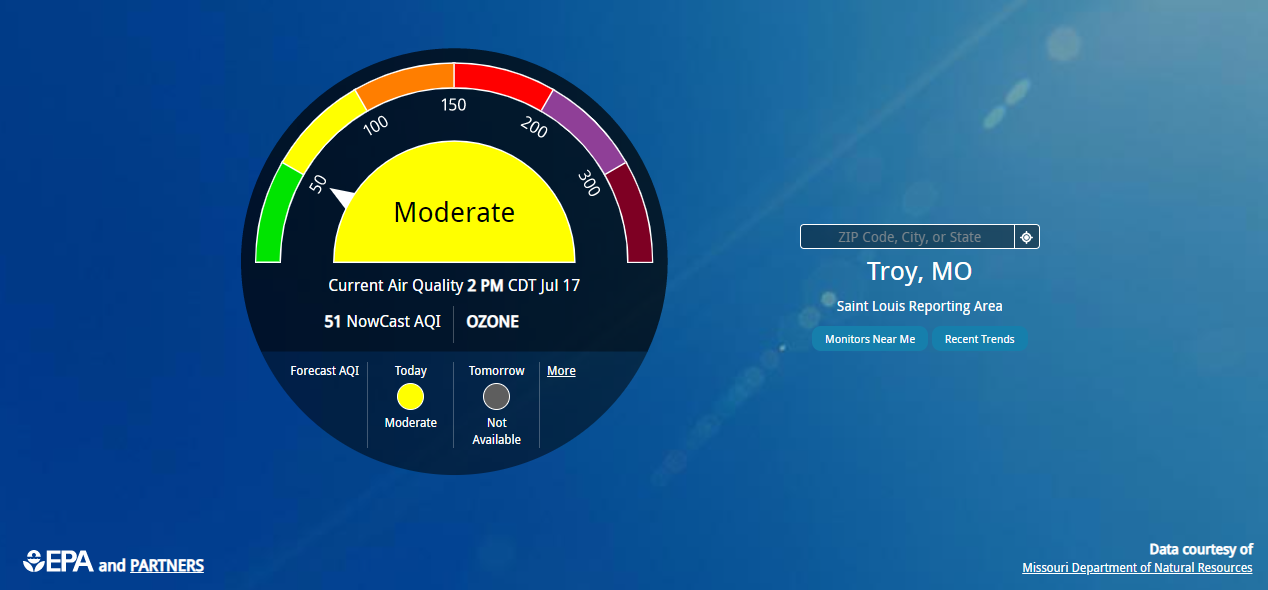Know your air quality, protect your health
As the Canadian wildfires continue, it is important for you to be aware of the smoke’s impacts on our air quality and health. Wildfire smoke has been causing air quality issues in our area for the last few weeks, on and off.
What is air quality?
Air quality refers to how much pollution and particles are in the air around us. Poor (bad) air quality, which contains high levels of pollution, is often hazy and dangerous to our health.
What happens if air quality is bad?
Smoke from wildfires can cause:
Respiratory (breathing) problems like coughing, wheezing, or asthma attacks
Stinging eyes
Headaches
Scratchy throat
Runny nose
Who is most affected?
Poor air quality can have harmful effects on our health, especially for people who are more vulnerable such as:
Children and teenagers
Adults older than 65
People who work outside
Pregnant women
People with respiratory (breathing) conditions such as asthma or COPD
People with other health conditions such as diabetes or heart disease
Air Quality Index (AQI)
The Air Quality Index (AQI) is a scale that shows the level of air pollution and how it affects your health. The AQI ranges from 0 to 500. Higher numbers mean that there is poorer (worse) air quality. Here is what each category means, according to the U.S. Air Quality Index:
Green 0 to 50 (Good): Air quality is satisfactory, and air pollution poses little or no risk.
Yellow 51 to 100 (Moderate): Air quality is acceptable. However, there may be a risk for some people, particularly those who are unusually sensitive to air pollution.
Orange 101 to 150 (Unhealthy for Sensitive Groups): Members of sensitive groups may experience health effects. The general public is less likely to be affected.
Red 151 to 200 (Unhealthy): Some members of the general public may experience health effects; members of sensitive groups may experience more serious health effects.
Purple 201 to 300 (Very unhealthy): The risk of health effects is increased for everyone.
Maroon 301 and higher (Hazardous): Health warning of emergency conditions: everyone is more likely to be affected.
Checking your local air quality
Check airnow.gov for real-time air quality updates. The website allows you to enter your zip code and see what the AQI is in your area. It is updated hourly.
Fire and smoke map
The wildfire map at fire.airnow.gov is where you can check both current wildfire activity and air quality conditions. Looking at this map, you can see the spread of wildfire smoke across the country. The interactive map is a joint effort of the U.S. Forest Service, EPA, and state and local air quality agencies.
Steps to protect your health
Limit outside physical activity
Spend less time doing outside activities that make you breathe heavily, such as jogging or cycling. If you must be outside, try to do activities during times when pollution levels are lower, such as early mornings or evenings.
Stay indoors
It is best to stay indoors as much as possible, especially when pollution levels are highest. Close windows and doors tightly to prevent outside air from entering your home.
Use air purifiers
Consider using high-efficiency particulate air (HEPA) filters or air purifiers to improve your indoor air quality. These devices can help remove fine particles and pollutants from the air.
Check on your neighbors who might be affected
Keep a close eye on children, older adults, and those with respiratory conditions, as they are more likely to have negative effects of poor air quality. Ensure they have access to clean indoor air and any necessary health or medical support.
Finally and importantly, use your common sense. If it looks smoky outside, it's probably not a good time to mow the lawn or go for a jog. And it's probably not a good time for your children to play outside.
To learn more about air quality and protecting your health, visit these websites:
https://scied.ucar.edu/learning-zone/air-quality/what-is-air-quality


